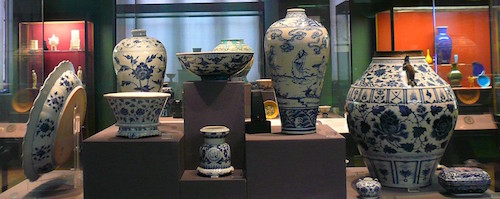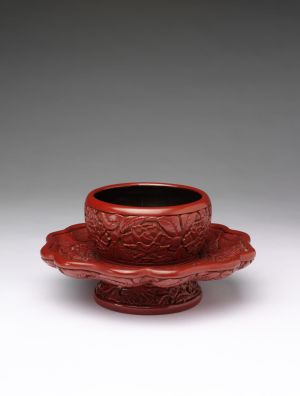Reach 11 - The Chinese Art Research Network
Lìonra Rannsachaidh nan Ealain Shìneach

There are Chinese cultural artefacts all over UK and Ireland housed in museums, galleries and private collections. Yet, so far there has been little organised communication between Chinese cultural specialists in higher education institutions (HEIs) and those responsible for collecting, curating and conserving these artefacts in the art world. Dr Minna Törmä, a lecturer in History of Art, developed the Chinese Art Research Network (CARN) to help bridge that gap with the help of the University of Glasgow and the Royal Society of Edinburgh.
Törmä describes the endeavour as: “a new and ground-breaking enterprise, bringing together for the first time stakeholders from HEI institutions and the non-HEI art world to discuss and formulate a model for best practice in Knowledge Exchange.” Some of the key stakeholders are from the museum and heritage sectors such as the Burrell Collection, the Hunterian Museum and Art Gallery, the National Museum of Scotland and the National Trust. The idea is that the network can connect, for example, a curator with the relevant specialist art historian or conservator from an HEI.
 CARN is different because, as Törmä points out, ‘it isn’t just about objects, it’s about people.’ That’s why the network also includes professionals from the business side of the art world from auction houses to private collectors. There has been limited research into how and why private collectors have acquired Chinese art. Törmä is interested in how UK collecting and the presence of Chinese art in the UK has developed. Additionally, she hopes that CARN will help researchers to understand the role of Chinese art in British design.
CARN is different because, as Törmä points out, ‘it isn’t just about objects, it’s about people.’ That’s why the network also includes professionals from the business side of the art world from auction houses to private collectors. There has been limited research into how and why private collectors have acquired Chinese art. Törmä is interested in how UK collecting and the presence of Chinese art in the UK has developed. Additionally, she hopes that CARN will help researchers to understand the role of Chinese art in British design.
The first step was to organise CARN’s first colloquium on the key challenges facing Chinese Art research in the UK. One of the first priorities will be to map the location of Chinese art across the UK and Ireland. The map will allow you to search for the provenance of an artefact, so, in theory, Törmä says, “You could check the map to find out where a work of Chinese art was in 1835.” Törmä acknowledges this is a very big project, but as CARN expands she is optimistic about its success, citing new partnerships with the School of Oriental and African Studies (SOAS), University of London and the team of China specialists and the Victoria and Albert Museum (V&A). Anna Jackson, Keeper of the Asian Department at the V&A commented: You can find out more about the second CARN colloquium which was held in August 2017 on the website.
includes a list of networks institutions and organisations, collaborating organisations and China related organisations. You can also find out about events and ongoing research projects. Törmä recently attended the European Association of Asian Art and Archaeology conference in Zürich where there was a roundtable discussion about using the CARN model to develop a European-wide Chinese art research network. Törmä hopes to expand the network further by raising its profile at the nextEuropean Association of Chinese Studies in 2018. Törmä is also enthusiastic about the future of both the object-based research behind CARN and the possibilities for object-based teaching in the new space provided at the reopened Kelvin Hall, for example. Törmä cites new partnerships with the School of Oriental and African Studies (SOAS), University of London and the team of China specialists and the Victoria and Albert Museum (V&A). Anna Jackson, Keeper of the Asian Department at the V&A commented:As someone with strong interests in cultural encountersand who recognises the need to move beyond the usual, simplistic, east-west model, I can appreciate the importance and timeliness of the [CARN] project. I certainly agree that the V&A, with its rich Chinesecollecting history, should be involved.
To join the CARN membership list and to subscribe to their newsletter visit the CARN blog.
If you would like to find out more about CARN or the model for setting up an art research network please email us.
If you wish to find out more about this article or about how you can progress your ideas (i) as an academic wishing to engage with a non-academic organisation or (ii) as a non-academic organisation interested in engaging with the academic knowledge base, please email the College of Arts KE Team.
<<Back to Reach 11

